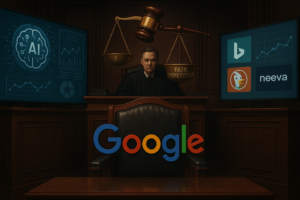The Double-Edged Sword of AI Detectors in Academia
In the evolving landscape of education, artificial intelligence has emerged as both a tool and a challenge for academic integrity. As professors and universities increasingly rely on AI detectors to scrutinize student work for plagiarism, the practice has sparked a debate over its fairness and efficacy.
AI detectors are designed to identify work that may not be entirely original, ostensibly to ensure students genuinely engage with their assignments. However, the reliance on these tools has raised concerns about their potential for bias and the broader implications for educational equity.
Concerns About AI Detectors
One of the primary criticisms of AI detectors is their susceptibility to false positives. These systems can flag work as plagiarized based on algorithmic misunderstandings of context, style, or content. Such errors can unfairly penalize students, especially those from diverse linguistic backgrounds, whose writing may not conform to the detectors’ standardized expectations.
Moreover, the use of AI detectors can inadvertently stifle creativity and innovation. Students may feel pressured to conform to a certain writing style or avoid exploring unconventional ideas for fear of triggering a false positive. This atmosphere can undermine the educational objective of fostering critical thinking and intellectual exploration.
Ethical Dimensions
The ethical dimensions of AI detectors extend beyond their technical limitations. The very act of deploying such systems raises questions about trust and autonomy in the student-educator relationship. By heavily relying on automated systems, educators may inadvertently send the message that they expect dishonest behavior, potentially damaging the trust essential for effective learning environments.
Striking a Balance
To address these issues, educators and institutions must strike a balance between leveraging AI’s capabilities and maintaining a supportive, trusting educational atmosphere. Rather than relying solely on AI detectors, a more nuanced approach could involve integrating them with human oversight. Educators can use AI as a preliminary screening tool, followed by a manual review to ensure fairness and accuracy.
- Integrate AI with human oversight.
- Use AI as a preliminary screening tool.
- Conduct manual reviews to ensure fairness and accuracy.
Promoting Academic Integrity
Additionally, educational institutions should focus on teaching students about academic integrity and the responsible use of AI tools in their work. By promoting an understanding of these technologies and their implications, students can be equipped to use AI ethically and effectively, preparing them for a future where such skills are increasingly essential.
As AI continues to shape various facets of our lives, the educational sector must adapt and evolve to harness its potential responsibly. By addressing the ethical and practical concerns surrounding AI detectors, institutions can foster an environment that values both innovation and integrity, ultimately enhancing the educational experience for students and educators alike.


